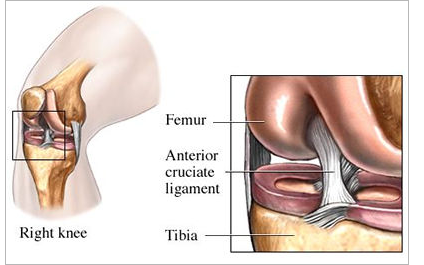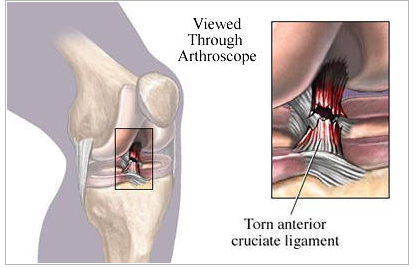SOMA Orthopedics
Medical Group Inc.
Anterior Cruciate Surgery (ACL) reconstruction is one of the most common knee procedures performed. However, it is important to choose a surgeon who is specifically trained in knee surgery and is familiar with the procedure.
The anterior cruciate ligament (ACL) is one of the most important of four strong ligaments connecting the bones of the knee joint. It is often injured.
Ligaments are strong, dense structures made of connective tissue that stabilize a joint. They connect bone to bone across the joint.


The function of the ACL is to provide stability to the knee and minimize stress across the knee joint:
- It restrains excessive forward movement of the lower leg bone (the tibia) in relation to the thigh bone (the femur).
- It limits rotational movements of the knee.
A tear to the anterior cruciate ligament (ACL) results from overstretching of this ligament within the knee.
- It's usually due to a sudden stop and twisting motion of the knee, or a force or "blow" to the front of the knee.
- The extent of the tear can be a partial or a complete tear.
- Individuals experiencing a tear to the ACL may or may not feel a pop at the time of the injury.
- It is often injured together with other structures inside the knee joint.
- After the initial injury, the knee may swell and become painful.
- Instability or a sensation the knee is "giving out" may be a major complaint following this injury.
The ACL can be reconstructed utilizing autograft (the patient’s own tissue) or allograft (a cadaver tissue graft). The surgery utilizes an arthroscope, a camera smaller than a pencil to examine all tissues. If other injuries exist to the menisci or articular cartilage, they are treated during the surgery prior to the reconstruction of the ligament.
The new ligament is routed into tunnels in the femur and tibia, and transfixed with screws.
Following the surgery, the patient undergoes physical therapy to regain strength and motion prior to return to sports.
Dr. Dave Atkin is a fellowship trained knee and shoulder surgeon and has published numerous articles on knee and shoulder surgery.
